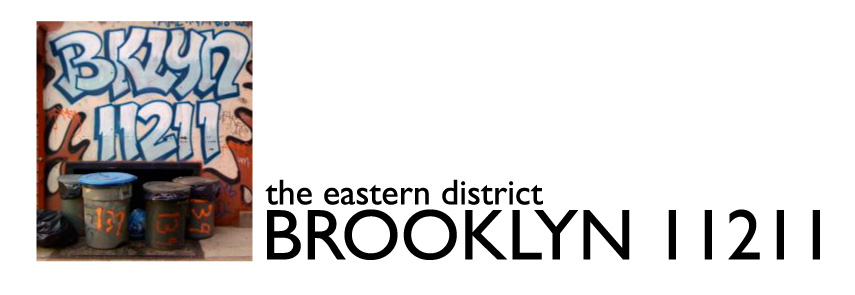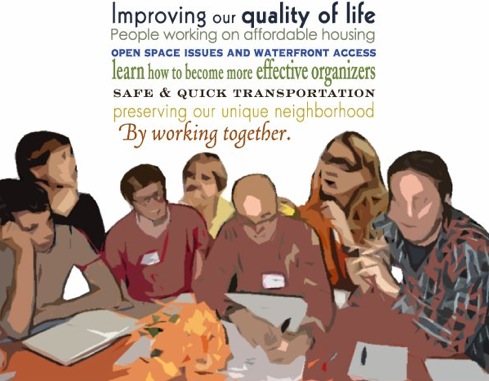Kate Yourke has answered my plea, and provided this account of the Broadway Triangle charette that was held earlier this month:
I was at the charrette, and intended to write some kind of report, but life overtook that intention and now I’m not sure what is the news except that the charrette must be made legitimate to give the rest of a community a chance at involvement in the development of the broadway triangle. The guest list was impressive, and the event was first class. The ideas were balanced and there was an easy consensus:
Environmental sustainability, community input in the planning process, maximized low-income housing, developments to allow for a mix of incomes within buildings and sites, integration in all aspects of the development, developments attractive to families, limited large scale and extensive small-scale retail business & entertainment opportunities, loads of underground parking, slower traffic on Flushing, small-town feel through plenty of trees, walkable streets, pleasant corridors leading to public transportation, maximize use of potential green space, including green roofs… There was the suggestion that a fund be created and an inventory of industrial and manufacturing businesses be done, with the businesses evaluated to see if they could co-exist with residential use, if not, adaptations paid out of the fund, and if necessary, subsidized relocation.
The Pfizer building was imagined as a multi-generational sports, arts, entertainment, and recreational center with space for artisan workshops and residential use.
I am sorry that I couldn’t make to this month’s “alternative” charette. I did attend the Autumn, 2007 community charette, and there were a lot of similarities to what Kate describes in this month’s forum. Like this one, last year’s charette resulted in a lot of very creative and thoughtful ideas about what a community should look like. Issues such as building heights, location of retail corridors and through streets and like all came up, as did sustainability, open space,community character and other hard to quantify ideas about neighborhood and smart growth.


